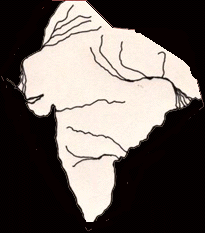|
1. What are the distinctive characteristics of painting in the court of Akbar?
2. How do those characteristics become modified in the painting of the courts of Jahangir and Jahan?
3. What elements of style in early Mughal painting seem to be derived from Indian (i.e., Rajput) painting traditions?
4. In Mughal painting, what are the particular aspects of individuals which become emphasized in portrait painting?
5. What is the effect of the illuminated margin in Mughal paintings? What aspects of those margins create such an ornamental effect?
Sites of the Week :
a) Delhi
Crowe, Sylvia, et al. the Gardens of Mughul India: a history and a guide. London, Thames and Hudson, 1972.
Gascoigne, B.The great Moghuls.New York, Harper & Row [1971].
Parihar, Subhash, Mughal monuments in the Punjab and Haryana. New Delhi : Inter-India Publications, 1985, c1984.
Welch, Stuart Cary. India : art and culture, 1300-1900. New York : Metropolitan Museum of Art : Holt, Rinehart, and Winston, c1985.
Archer, W. G. Visions of courtly India : the Archer collection of Pahari miniatures. Archer, W. G. Washington : Foundation, c1976.
Brown, Percy. Indian painting under the Mughals A.D. 1550 to A.D. 1750. New York : Hacker Art Books, 1975.
Topsfield, Andrew. An introduction to Indian court painting. Owings Mills, Md. : Stemmer House Publishers, c1984.
Beach, Milo Cleveland. Mughal and Rajput painting. Cambridge ; New York, NY, USA : Cambridge University Press, 1992.
|


